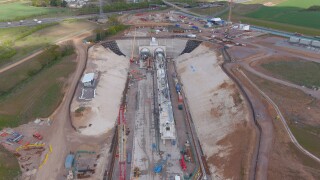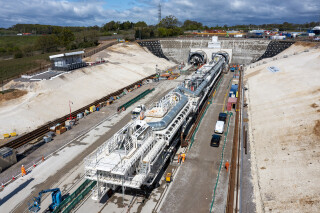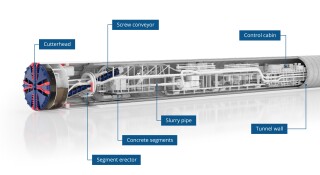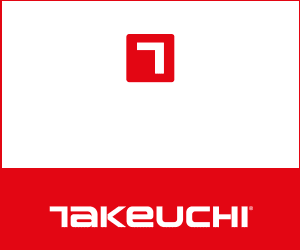HS2 contractors will today launch a 2,000-tonne tunnel boring machine (TBM) named Florence from the Chilterns tunnel south portal site next to the M25 in Hertfordshire.
This is the first of 10 TBMs that will dig 64 miles of tunnels between London and Birmingham.
Florence and twin sister machine Cecilia, named after nurse Florence Nightingale and astrophysicist Cecilia Payne-Gaposchkin respectively, will each dig a bore of the 10-mile Chilterns tunnel. Cecilia will launch next month to excavate the second tunnel at the South Portal site.
Built by Herrenknecht in Germany, the TBMs are designed specifically for the mix of chalk and flints under the Chilterns. Each machine operates as a self-contained underground factory, digging the tunnel, lining it with fibre-reinforced concrete wall segments and grouting them into place at a speed of around 15 metres a day. Each tunnel will require 56,000 segments, which will all be made on site.
Each TBM will be operated by a crew of 17 people on board, working in shifts to keep the machines running 24/7. They will be supported by more than 100 people on the surface, managing the logistics and maintaining the smooth progress of the tunnelling operation.
Chalk excavated from the tunnels will be used for landscaping at the south portal site once construction is complete.
HS2 Ltd chief executive Mark Thurston said: “The launch of our first tunnelling machine is a major moment of progress for the HS2 project as we work to deliver a high-speed railway that will offer low-carbon alternatives for long distance journeys across the UK.

“With more than 16,000 jobs already supported by the project and thousands of companies big and small benefiting from contracts, HS2 is providing a major boost to the economy in these difficult times. The start of tunnelling is a moment of genuine excitement for everyone involved, and I hope the entire country will get behind this truly transformative project.”
Florence and Cecilia are operated by HS2’s main works contractor for the central section, Align – a joint venture of Bouygues Travaux Publics, Sir Robert McAlpine, and VolkerFitzpatrick.
Align project director Daniel Altier said: “Align is very proud to be launching the first two TBMs on the HS2 project. The TBMs include a number of innovations to improve efficiency and the safety of the environment in which the crew will be working, that have never before been introduced on any previous TBMs, worldwide.”
It is reckoned that Florence and Cecilia are the most advanced TBMs ever used in the UK. They have a ‘variable density’ design – a new design from Herrenknecht – to cut through both soft chalk and hard flints with equal proficiency.
They also allow for semi-continuous boring, where instead of waiting for a full ring of tunnel segments to be put in place before pushing off again, the TBM pushes off against a half-complete ring to accelerate the process.
They also have a specially commissioned Kuka robot, called Krokodyl, to automate the removal of the wooden spacer bars that are used to separate the stacked lining segments before installation. A second feature of the robot, called the Dobydo, then places the dowels into position ready for the segment to be slotted into place. This is usually done by hand in tunnel construction but is hazardous.
Got a story? Email news@theconstructionindex.co.uk






